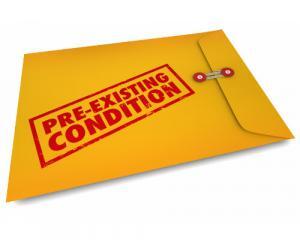When filing your personal injury claim, your lawyer should include compensation for economic and non-economic damages in order to cover all losses and disruptions to your life that occurred due to the accident. So what is the difference between the two? Well, economic damages covers all things that have a dollar amount tied to them such as medical expenses, rehabilitation costs, lost wages from missed work, and other things the injured party had to pay for due to the accident. Economic damages also include permanent impairment or disfigurement in the most severe of accidents. But there are other things that you also have to go through that don’t have a specific dollar amount that also need to be compensated for which is where non-economic damages come in. These are things such as pain and suffering, loss of quality of life, mental traumas, distress, frustration, and more.
Pain and suffering is one of the most common non-economic damages that are claimed in injury cases because almost every injury comes with a substantial amount of physical pain that can last from hours to days or even the rest of your life. When this happens, it is only right that you receive extra compensation, above and beyond your economic losses because if the accident hadn’t happened, you never would have gone through all of this.
Most insurance companies low ball people on pain and suffering damages, and if you don’t have an attorney it can feel awkward trying to justify these damages to someone who is pressuring you to sign a release and trying to minimize the pain you went through.
Most insurance adjusters will use a per diem (which means per day) method or they may use a multiplier method. Let’s break these methods down. Per diem method means that your attorney will calculate how much you lost per day in economic damages from your accident and then will base the amount for pain and suffering off of that number.
When using the multiplier method, your economic damages are calculated first and then they will use a multiplier of that amount to come up with a number for your non-economic damage compensation. This multiplier relies heavily on how severe your injuries are. The more severe the injuries, the higher the multiplier. This is an unexpected method as well and may not account for the true value of pain and suffering in any specific case.
Your attorney should take a more personal approach than an insurance adjuster, and tailor the request for non-economic damages to your specific circumstances, within the bounds of the law, which limits in Colorado the amount that a person can receive in non-economic damages. The legal top limit varies depending on what type of case, the culpability of the defendant, and the year the accident happened. Consult with your lawyer if you have any questions about the legal cap for pain and suffering or non-economic damages.
At Rector Stuzynski LLC, we never use a depersonalized approach in any aspect of our practice, including the calculation of non-economic damages, which is truly a personal question that can vary drastically. We do everything we can to maximize recovery for all of our clients, including this personal approach to pain and suffering which is why we recommend keeping a journal of your pain symptoms which we can rely upon when it is time to make a demand and settle your case.
Even though you have up to 2 (or 3) years to file your case, we don’t recommend waiting that long. There is evidence that needs to be collected and some of that evidence could become harder and harder to collect as time goes on. For instance, witness testimony of the accident will be fresh in their mind shortly after the accident, but years later, the witness might have inaccurate memories of the incident which could negatively affect your claim, so make sure to speak with a personal injury attorney soon after your accident for best results.
We all know someone who exaggerates things, but since they don’t know you personally, sometimes the liable party will think you are exaggerating your physical pain and suffering to try to get more money out of them, so it is imperative that you have solid proof that your injuries as well as your pain and suffering is real and not being exaggerated. Let’s look at some of the things that can negatively or positively influence your claims.
Getting Full Treatment – If your doctor recommends 8 weeks of physical therapy to fully recover from your injuries, make sure you do the full 8 weeks. If you don’t then you could risk not fully recovering from your injuries which can be used against you on your claim. They could say that you didn’t finish your treatment which is in turn causing you to have pain and suffering that was unnecessary had you finished treatment. Getting the full treatment as recommended by your doctor can get rid of this factor as well as insure that you have actually fully recovered, so don’t skimp on this.
Saying The Wrong Thing To The Wrong Person – When speaking to police, insurance companies, the other party’s lawyer or other people, you need to watch what you say around them. If they overhear or you speak directly to them that your injuries aren’t that bad or that it didn’t inconvenience you very much, you can bet that they will use that against you during negotiations. It’s only natural to try to put a strong face on things and try to power through the pain, even when things are bad. Sometimes we would rather suffer silently than admit to someone else that we are hurting. These natural human impulses can compromise your case if you are not careful. Always be careful of what you say in these situations because it could come back to haunt you if you say the wrong things. If you can, make sure to have your lawyer present during these conversations and let them speak on your behalf when possible.
Showing The Wrong Things On Social Media – Saying your pain and suffering is tremendous and that you have issues walking in your claim, then going on social media posting pictures of running around on the beach or going on hikes can really hurt your claim. This is a major issue that the other party will most definitely use against you. Your life on social media should not conflict with the story you are telling in your claim, so stay off social media until your claim is finished and your rehabilitation is complete. It is also fraudulent to claim injuries that are not actually true. We do not condone lying nor do we condone fraudulent conduct. However everyone does have better days, even when they’re in pain. You should resist the temptation to highlight the positives on social media, as you could have an insurance company use this against you when it comes time to settle.
Keep Records Of Your Pain – It’s never a bad idea to keep a journal or some sort of log of your injuries, the healing that has occurred at certain times and even how much pain you feel in different areas of your body, day by day. Some days your pain may be worse and it could be hard to walk to the fridge to get water, so make sure to note these situations down(the good days and the bad) in order to be able to present this information as a detailed record of your discomfort. This can go a long way in showing how real your pain and suffering actually is.
Having Friends And Family Confirm Your Suffering – If you have a spouse, kids or other family members around a lot, ask them to write about what kind of pain and discomfort they have personally watched you go through during your healing process. If you constantly hold your back or need a cane to walk around the house and wince with pain during certain activities, these are a great way to account for the actual amount of pain that you have gone through on a regular basis during healing.
Personal injury lawyers deal with injury claims every day and know the ins and outs of the laws surrounding personal injury claims. They will guide you through the entire process as well as inform you of ways that you can make the most out of your claim by doing some of the things listed in this article as well as preparing a rock solid case for you to present to the liable party. You need a specialist to work with you through this process if you want the best possible outcome, so make sure you find an excellent injury attorney like Rector Stuzynski LLC to work with.
Our law firm has been helping injury victims for decades and we have a very strong track record of getting our clients the compensation they deserve for their injuries. Don’t let a lawyer who isn’t familiar with personal injury law work on your case, work with the best law firm in town and we guarantee that you will be much happier with the results.
Rector Stuzynski LLC’s staff is here for you, every step of the way. We check in on you, explain everything, walk you through the process, build a strong case and get you exceptional results but most importantly we make sure you get the care that you need so you can fully recover and get back to life as usual as quickly as possible. Our long list of 5 star reviews will show you exactly how well we treat our clients and we would be happy to extend the same professional service to you and your family. Call for a free consultation anytime or feel free to visit our office in Downtown Colorado Springs to speak with one of our attorneys in person.







